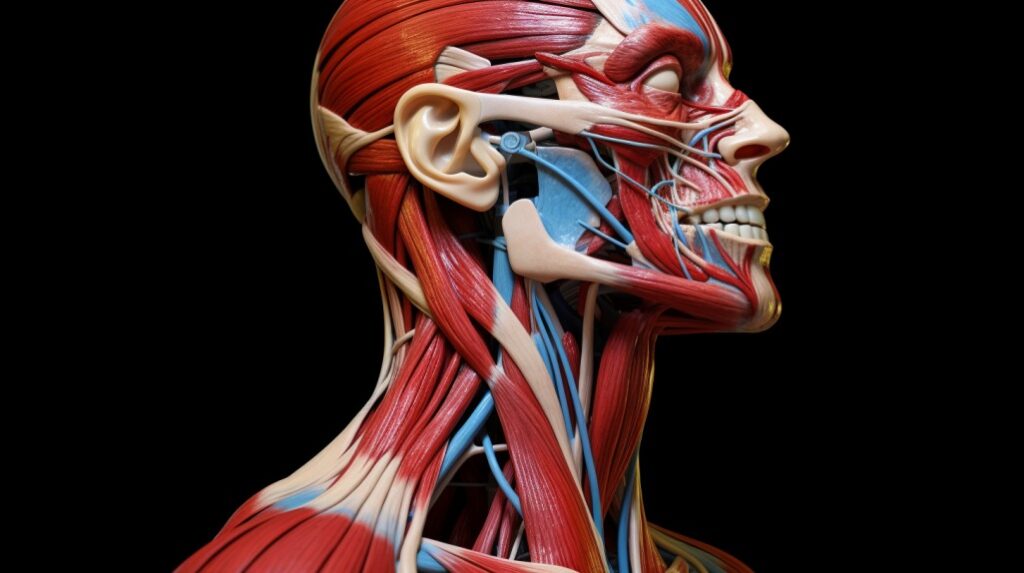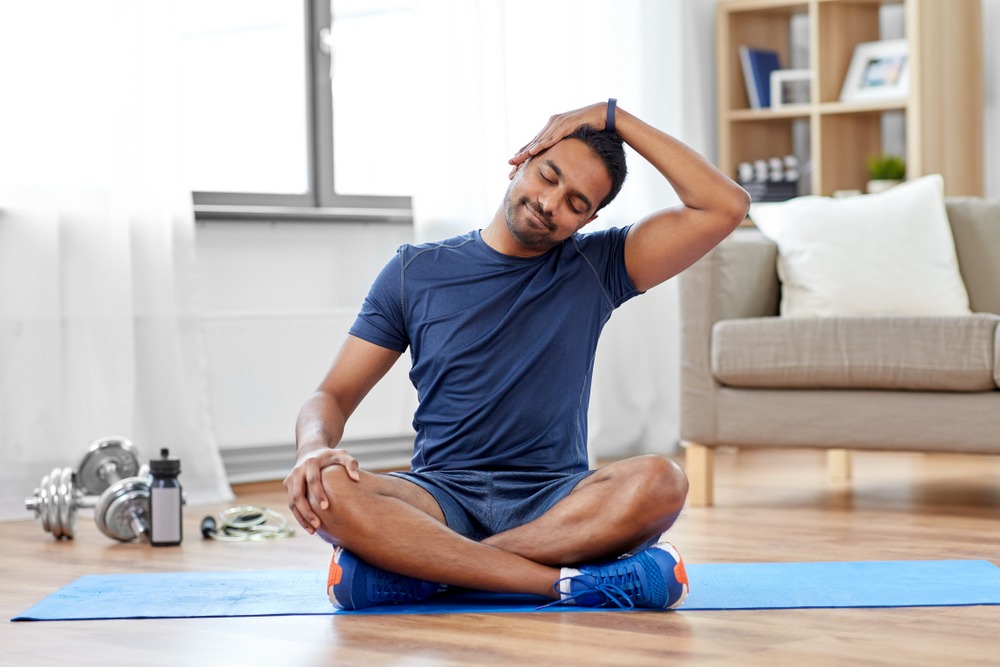Picture yourself waking up after a peaceful night of sleep., excited to take on the day. As you stretch and yawn, you abruptly hear a distinct crunch from your neck. You reach up to massage it and notice that the neck muscles are stiff and knotted. That neck crunch can be an alarming experience, but it also indicates that something may be wrong.
Your neck is responsible for more than just supporting your head. It also facilitates vital nerve communication throughout the body and houses the upper portion of your spinal cord. Neck pain is a prevalent issue that several factors can cause, and ignoring it can result in a cascade of complications.
In this article, we’ll look into the common causes of neck crunches and what symptoms you should look for. We’ll also discuss the solutions, treatments, and what medical professionals have to say about these scenarios.
What is Neck Crunching?
Neck crunching refers to the cracking and popping sound accompanying specific neck movements. Although the noise comes from the bones themselves, it can result from the friction between bones, tendons, and muscles as they interact.
The medical term for neck crunching is Neck Crepitus. Crepitus can also occur in other joints, such as the knees, shoulders, and fingers. While crepitus can sometimes be audible, it’s also possible to feel it as a sensation under the skin.
Gas bubbles in the joint-lubricating synovial fluid suddenly discharge, causing neck crunching. When a joint moves, the internal pressure changes, causing these gas bubbles to escape. During a neck crunch, gas discharge produces the characteristic cracking or popping sound.
Anatomy of the Neck

To fully understand the occurrence of neck crunching, it is necessary to investigate the complex anatomy of the neck. These elements work together to facilitate the spine’s mobility, stability, and protection:
- Vertebrae: The cervical spine, or neck, consists of seven vertebrae (C1 to C7) that serve as the foundation of the neck region. These vertebrae are stacked, allowing for flexibility while retaining stability. When the vertebrae weaken over time, they release gas bubbles, which cause neck crunching.
- Muscles: The muscles are responsible for neck movements such as rotating, tilting, and flexing. These muscles connect the sternum and clavicle to the skull and the ribs to the cervical vertebrae. When muscles are tense or exhausted, they can exert unequal pressure on the joints, leading to neck flexion.
- Ligaments: The ligaments are tissue bands that connect the bones. These tissues aid in stabilizing the vertebrae and preventing excessive movement. If ligaments become stiff or inflamed, they may impede the joint’s natural movement and contribute to the feeling of the neck crunching.
- Cartilage: Cartilage covers the surfaces of bones where they come together to form joints. It aids in cushioning joints and reduces friction. However, if the cartilage has deteriorated, it increases friction between bones. This friction can cause gas to escape from the synovial fluid, resulting in the audible sound of a neck cracking.
Common Causes
Arthritis
Bones affected by osteoarthritis can rub against one another, causing friction and the discharge of gas bubbles, causing a distinct crunching sound. In Rheumatoid Arthritis, inflammation can affect the synovial fluid and lead to changes in joint mechanics, potentially contributing to neck crunching.
Poor Posture
Sedentary lifestyles frequently involve prolonged seating periods, screen hunching, and slouching. Poor posture places excessive strain on the cervical spine, resulting in muscle imbalances, misaligned joints, and increased pressure on the neck joints.
Muscle Imbalance
If the muscles on one side of the neck are substantially stronger than those on the other, this can cause joint misalignment and increase the likelihood of neck flexion. Similarly, muscle imbalances between the flexor and extensor muscles of the neck can lead to abnormal joint movement and the discharge of gas bubbles.

Symptoms to Watch For
Harmless neck crunching tends to occur infrequently. You can notice it during specific movements or after waking up from a night’s sleep. Occasional neck crunching is normal and harmless, particularly without discomfort or pain. It may coincide with the triggering movement and vanish shortly after that.
Frequent occurrence is characteristic of severe neck crunching. If you frequently experience neck pain, even during routine movements, it may indicate an underlying problem that requires attention. It may persist beyond the action that initially initiated it, and the sensation may continue even after the movement ceases.
The Importance of Medical Consultation
Consult a medical professional if neck crunches have persistent distress, pain, or limited range of motion. Being unable to consult neck crunches may interfere with your daily activities, such as causing difficulty in sleeping, working, or engaging in recreational activities.
When you consult a healthcare professional about neck pain, they may employ a variety of diagnostic procedures to determine the underlying causes.
X-rays can aid in detecting structural abnormalities, such as misaligned vertebrae, degenerated discs, and arthritis symptoms. Magnetic Resonance Imaging (MRI) utilizes magnetic fields and radio waves to produce images. Detailed images of your neck’s soft tissues. This diagnostic technique can provide an exhaustive view of the neck’s internal structures, aiding in identifying the cause of neck compression.
Non-Invasive Treatments
Physiotherapy
Non-invasive treatments provide effective means of relieving symptoms and promoting neck health. Physiotherapy consists of exercises, massages, and manual techniques designed to enhance mobility, strengthen muscles, and treat musculoskeletal conditions. The activities involved improve the neck’s strength, mobility, and posture.
Home Remedies
Applying warm compresses or heating blankets to the affected area may increase blood circulation, relax muscles, and relieve pain. Placing heat pads on the neck for approximately 15 to 20 minutes can reduce muscle tension and relieve the discomfort associated with crunching.
Over-The-Counter Medications
Common OTC options such as ibuprofen and naproxen may help reduce inflammation and alleviate pain, allowing you to manage discomfort while addressing the underlying issue. However, It’s advisable to consult a healthcare professional before using OTC medications, especially if you have pre-existing medical conditions or are taking other medications.
Top Exercises and Solutions

Neck Stretches
Neck stretches are crucial for preserving neck mobility, relieving muscle tension, and decreasing the risk of crunching. You may tilt your head to the side, lower it to your chin, or tilt it back and gaze upwards.
Strengthening Exercises
Strengthening exercises aid in developing the muscles that support and stabilize the neck, reducing the risk of neck crunches and promoting overall neck health. While seated or standing, tilt your head back slightly and pull your chin in. Additionally, you can perform neck rotations to exercise the muscles, ligaments, and cartilage.
Joint Mobilization Techniques
Joint mobilization techniques involve gentle movements that enhance joint mobility, alleviate stiffness, and decrease the likelihood of neck crunches. Tuck your chin gently without tilting your head. This exercise aids in improving cervical spine mobility. In addition to lateral and rotational glides, you can enhance neck health with lateral and rotational glides.
Invasive Treatments
Steroid Injections

Anti-inflammatory steroid injections are administered directly to the afflicted area of the neck. It can reduce inflammation, alleviate pain, and ease the discomfort caused by neck crunching.
However, before the medication takes effect, there may be a temporary increase in pain and inflammation. It is also possible for repeated injections to damage adjacent tissues and weaken the bones.
Individuals prone to infections and bleeding disorders or corticosteroid allergies should not take this treatment approach.
Surgery
Surgery is the last resort for addressing neck crunching, where conservative and less invasive therapies have failed to treat neck compression satisfactorily.
Compared to other treatment approaches, surgery carries the risk of infection, which can be particularly concerning in the neck region. Recovery from neck surgery can be lengthy, requiring rehabilitation and careful adherence to post-operative instructions.
Medical professionals do not recommend surgery for individuals with certain medical conditions, advanced age, or those not healthy enough to undergo the procedure.
Cost and Insurance
The costs of treatment can vary depending on the treatment approach you need. Physical therapists usually charge their fees per session. Home remedies like heat pads and OTC medications are relatively affordable. Surgical costs include surgeon’s fees, facility fees, anesthesia charges, and post-operative care, making it the most expensive treatment for neck crunches.
Ensure that a specific healthcare provider is in-network with your insurance plan if you intend to receive treatment. Numerous health insurance policies cover a portion of physiotherapy expenses, mainly when prescribed by a physician.
The health insurance coverage for surgery varies based on medical necessity, the specific procedure, and your insurance plan.
Daily Routine Adjustments
If you spend much of your day at a desk or working on a computer, choose a chair with proper lumbar support and adjust the height to keep your feet flat on the floor. Sit with your back against the chair and shoulders relaxed. Take breaks every 20-30 minutes to stretch your neck and shoulders.
You may also incorporate neck-friendly exercises and movements to support your neck’s health. Regularly perform gentle neck stretches to maintain flexibility and reduce muscle tension.
Preventive Measures
Even your sleep routine can influence neck health. Opt for a pillow that supports the natural curve of your neck and keeps your spine aligned while you sleep. Sleep on your back or side with a supportive pillow rather than on your stomach.
Good posture reduces strain on the muscles and ligaments of the neck. Ensure that your back is straight against the chair’s backrest when seated. If you find yourself slouching, take a break and stretch your neck and shoulders.
Stress can also manifest physically, contributing to muscle tension and neck discomfort. Find healthy ways to manage stress, such as exercise, yoga, or meditation. Practice mindfulness to reduce stress, enhance awareness of body tension, and release it consciously.
Expert Opinions
According to Michele Perez, MD, a physical medicine and rehabilitation physician, neck crunching and grinding sounds likely do not indicate a health issue. It is necessary to see a doctor to rule out a severe underlying condition if a person is excessively concerned about frequent neck cracking noises in the absence of pain or other troubling symptoms.
Timothy O’Connor, M.D., head of minimally invasive and robotic spine surgery at Baptist Health’s Marcus Neuroscience Institute in South Florida, says it has to do with the neck’s segments. Several joints connect each section. He recommends trying non-invasive treatment methods, such as physiotherapy if there is no evidence of spinal cord or nerve damage.
Getting a second opinion from a different doctor is a smart way to ensure you get a complete picture of your situation. A further point of view can confirm the original diagnosis, giving you a better understanding of your situation. Doctors may also suggest different ways to treat you that fit better with your preferences, ideals, or health history.
FAQs
What are the benefits of physiotherapy for neck crunching?
Physiotherapy can give you custom routines and stretches to help strengthen your neck muscles, improve your posture, and make it easier to move your neck. A trainer can create a plan that fits your needs and helps you stop crunching your neck.
Can Neck Crunching Lead to Serious Conditions?
Most of the time, it’s safe to crunch your neck. But if it comes with pain, soreness, swelling, or nerve-related symptoms, it could be a sign of deeper problems that a medical professional must check.
Can I Prevent Neck Crunching?
Keeping a healthy lifestyle, like working out regularly, having good posture, and finding ways to deal with stress, can lower the chance of neck crunching.
Conclusion
Neck crunching, also called cervical crepitus, is the sound you can hear when you move your neck. It becomes a concern when accompanied by pain or other symptoms. If you ignore neck pain, it could lead to more than just noises now and then. It could affect your quality of life as a whole.
Talk to experts about exercises, posture improvement, or possible treatments. Make self-care a priority, and do good things for your neck daily. By doing this, you not only stop yourself from neck crunches but also help keep your neck healthy.
Additional Resources
Several valuable resources can provide in-depth information, expert insights, and practical advice about neck crunches. Books about physiotherapy, neck health, and posture improvement offer strategies for improving neck health and posture.
Websites like Mayo Clinic, Spine-Health, and WebMD provide articles with authoritative information on various health topics, including neck health. There are also videos and expert advice on managing neck pain.





